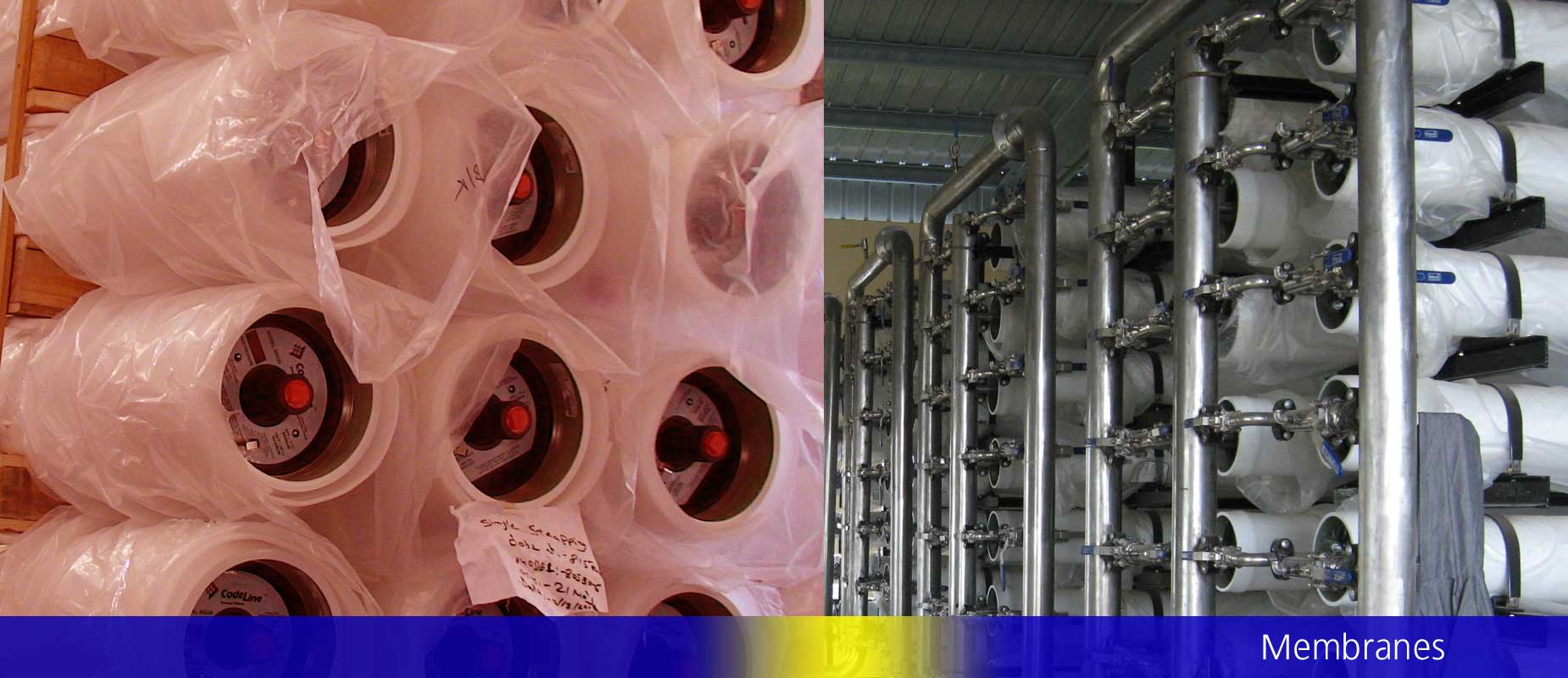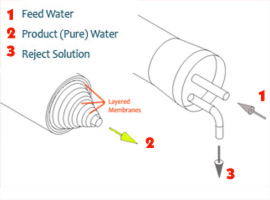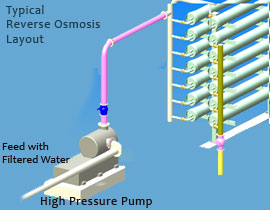
Components ▼
❉ ┃ CLARIFIERS ❉ ┃ FILTERS & VESSELS
▴ Principle of Membrane Separation

▴ Typical Reverse Osmosis Scheme
Reverse Osmosis
Reverse Osmosis or RO, is used to purify water by removing soluble impurities such as salts by passing the water through semi-permeable membranes. Using High Pressure pumps, the impure water is forced into RO Membranes, where the lower density part, viz. pure water get passed through the membrane while high density part i.e. impurities that can not pass through the membranes been collected as reject.
Another unique application of Reverse Osmosis where two sets of membranes are used one after another.
The concentrated Salt Solution or Reject is used to feed another set of Reverse Osmosis membranes. The process optimizes the output as well as requires lesser amount of filtered water as Feed.
Typical Reverse Osmosis application areas are Drinking Water, Pure Water Generation, Effluent Treatment etc.
In order to increase the life of RO Membranes, special care been taken for Pre-treatment of RO Feed water including Removal of Iron, Softening and Removal of all Oil Traces, Micro particles etc.
Reverse Osmosis plays a big role in Desalination of Sea Water.
We source membranes from leading manufacturers of USA only.
Ultra Filtration
Ultra Filtration is a tangential flow, pressure driven filtration process that separates particles on the basis of their molecular size. Pore diameters of Ultrafiltration membranes are in the range of 10 to 200 Å (0.02 to 0.001µ). Solvents and particles larger than 0.001µ gets filtered in this process. Solvents and species having a diameter smaller than the pore size of the membrane will pass through the membrane and emerge as ultrafiltrate known as permeate. Rejected species are progressively concentrated in the retained stream.
Ultra Filtration membranes are reusable and cleanable with standard chemicals.